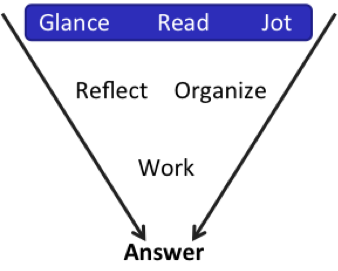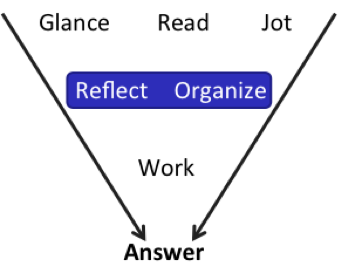Decoding Divisibility and Primes on the GMAT – Part 2
 Did you know that you can attend the first session of any of our online or in-person GMAT courses absolutely free? We’re not kidding! Check out our upcoming courses here.
Did you know that you can attend the first session of any of our online or in-person GMAT courses absolutely free? We’re not kidding! Check out our upcoming courses here.
Welcome to the 2nd installment of our dive into Number Properties. If you haven’t yet tried the first problem, start with the first article in the series.
Let’s dive right into our second problem from the GMATPrep® free exams:
“*What is the greatest prime factor of 4^17 – 2^28?
“(A) 2
“(B) 3
“(C) 5
“(D) 7
“(E) 11”
You know the drill. First, what’s going on?
Glance: PS. Ugly exponents. The answer choices are small/easy numbers.
Read: The question is pretty straightforward. Right up until we get to the ugly math. ![]()
Jot:

I definitely have to think about how to approach this.
My first thought: it’s annoying that the bases are different. Oh, but I can fix that! 4 is a multiple of 2.

Okay…now what? They probably want me to think that that’s just  , in which case the answer would be 2. But you subtract the exponents when you’re dividing the two bases. Here, the two bases are subtracted, so subtracting the exponents is an illegal move. The answer probably isn’t 2; if I get stuck and have to guess, I won’t guess (A).
, in which case the answer would be 2. But you subtract the exponents when you’re dividing the two bases. Here, the two bases are subtracted, so subtracting the exponents is an illegal move. The answer probably isn’t 2; if I get stuck and have to guess, I won’t guess (A).
Oh, this is ringing a bell. I’ve seen something like this before. When I can’t combine the terms using standard exponent rules, I should try pulling out a common term. That math is more annoying, but at least it’s something I’m allowed to do.

I’ve got it! 63 = (9)(7) = (3)(3)(7). So the prime factors of the whole thing are 2, 3, and 7. The largest one is 7; that’s the answer!
The correct answer is (D).
Even if I hadn’t figured out that last part, I still could have done a decent job of making an educated guess. 2 is a trap answer, as I found earlier. And if they’re asking for the “greatest” number, then the answer usually won’t be the greatest number given, so I wouldn’t have picked (E) either. I’d have guessed among (B), (C), and (D), which gives me decent odds on a problem I don’t know how to solve.
Key Takeaways for Divisibility and Primes on the GMAT:
(1) Exponents can be mixed in with divisibility and prime! Other topics also often get mixed up with Number Properties topics. Start looking out for other examples in your studies. (And know your exponent rules.)
(2) You can sometimes cross off answers by knowing what you’re not allowed to do, as we did for answer (A). Start training yourself to think about trap answers, too, not just correct answers, and you’ll turn yourself into a better educated guesser.
(3) We’ve got one more for you! Join us for the third, and final, installment of this series, when we’ll try the hardest problem yet.
* GMATPrep® questions courtesy of the Graduate Management Admissions Council. Usage of this question does not imply endorsement by GMAC.
Keep Reading: Part 3
Can’t get enough of Stacey’s GMAT mastery? Attend the first session of one of her upcoming GMAT courses absolutely free, no strings attached. Seriously.
 Stacey Koprince is a Manhattan Prep instructor based in Montreal, Canada and Los Angeles, California. Stacey has been teaching the GMAT, GRE, and LSAT for more than 15 years and is one of the most well-known instructors in the industry. Stacey loves to teach and is absolutely fascinated by standardized tests. Check out Stacey’s upcoming GMAT courses here.
Stacey Koprince is a Manhattan Prep instructor based in Montreal, Canada and Los Angeles, California. Stacey has been teaching the GMAT, GRE, and LSAT for more than 15 years and is one of the most well-known instructors in the industry. Stacey loves to teach and is absolutely fascinated by standardized tests. Check out Stacey’s upcoming GMAT courses here.

